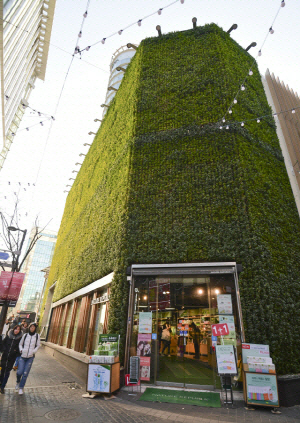[토지 공시가 11% 급등]
Seoul major area simulation
Although the rate of increase in the high-rise land was only 2-3%,
The ownership tax burden increases by 20-30%
GBC 9 billion, 2nd Lotte 4 billion
When transferring to the tenants of the increased Cebu Dam
May act as a factor in the rent increase
 viewer
viewer
As the publicly announced land price of standard land next year rises by 10.37%, the highest in 14 years, the burden of ownership tax (property tax and comprehensive real estate tax) is also expected to jump. In particular, in the case of ultra-high-priced land, the publicly announced land price rose only 2-3%, lower than the average, but the tax burden increased by 20-30%.
The market is concerned that there is a high possibility that property owners will pass on the increased tax burden to tenants due to the increase in publicly announced land prices. In particular, there is an atmosphere of concern that the publicly announced land price of commercial land will increase by 10.14%, increasing the burden on building tenants. Looking at the official land price for next year, announced by the Ministry of Land, Infrastructure and Transport on the 23rd, the nationwide increase was 10.37% (6.33% the previous year) and Seoul 11.41% (7.89%).
 viewer
viewer
◇The public land has risen by 3%, but the ownership tax has risen by 30%.‘=As a result of simulating the burden of holding tax (property tax + comprehensive real estate tax) of the top 10 places announced next year, the burden of holding tax has soared to a maximum of 38% when the Seoul Economic Daily commissioned Woo Byung-tak, manager of the Real Estate Investment Advisory Center of Shinhan Bank, by Seoul Economic Daily.
In detail, it is expected that the property of’Nature Public (169.3㎡)’ in Myeong-dong, Jung-gu, Seoul, which occupied the nation’s’No. 1 land price’ this year, will have to pay a holding tax of 23.149 million won, an increase of 27.1% from the previous year. The official land price per square meter here rose only 7.5 million won (3.8%) from 191 million won this year to 265 million won next year, but the burden of ownership tax was much higher. The property tax here, estimated at 12.08 million won last year, has soared more than 100 million won in two years.
The Myeong-dong Woori Bank site (392.4㎡), which has the second highest land price, is expected to see a whopping 38.1% increase in ownership tax. The official land price increased by 3.6% from 192 million won to 191 million won, but the ownership tax will have to pay an additional 175 million won from 462 million won this year to 63636 million won next year. The 65-7 Chungmuro 2-ga site (300.1㎡), where Myeongdong CGV and others are located, jumps 2.7% from 184 million won to 191 million won per ㎡. On the other hand, it is expected that the ownership tax will have to pay 436.4 million won, an increase of 127 million won (30%). Most of the commercial lands in the Myeongdong and Chungmuro areas, which are areas with the highest land prices, are expected to increase their public land prices to 3%, while the ownership tax increases by 25-35%.
Major landmark buildings in the Gangnam area are also significantly increasing the tax burden. The site for the Global Business Center (GBC) in Samseong-dong, Gangnam-gu, which is the planned new headquarters of Hyundai Motor Group (79,341.8㎡), will increase the publicly announced land price by 13.8% from 65 million won per ㎡ to 73.95 million won. This is close to the 14.6% increase this year. The second Lotte World Mall site (87,182.8㎡) in Sincheon-dong, Songpa-gu, the tallest building in Korea, rises 6.0% from 47 million won per ㎡ to 49.8 million won. The ownership tax burden is even higher. GBC’s ownership tax is KRW 4,689 million this year, from KRW 47,695.8 million to KRW 563,98.3 million next year, KRW 9 billion. 10.8%) respectively.
 viewer
viewer
◇ Although the Ministry of Land, Infrastructure and Transport’tax fluctuations are not big’= Looking at the rate of increase in publicly announced land prices next year by use, residential 11.08%, commercial 10.14%, agricultural land 9.24%, forest fields 8.46%, and industrial use 7.56%. In the market, there are also concerns that if the tax burden is passed on to the tenant due to the increase in the holding tax burden due to the increase in the publicly available land price, it may act as a factor in raising the rent.
On the other hand, the Ministry of Land, Infrastructure and Transport explained that “the property tax rate on land is lower than that of houses, so the change in property tax amount due to changes in the publicly known land price is not large.” According to the simulation results of the Ministry of Land, Infrastructure and Transport, the publicly announced land price of a store in a market (76㎡) in Seoul will rise by 4.26% from 980,400,000 won this year to 1,022.2 million won next year, and the property tax will rise by 150,000 won from 3.19 million won to 3.34 million won. He explained that the site for small and medium-sized factories generally rises by 10,000 to 120,000 won.
However, in the case of the Ministry of Land, Infrastructure and Transport simulation, it was conducted for factories and farmland with low property tax rates. In addition, in the case of middle and high-priced land for residential (11.08%) and commercial (10.14%) where the publicly announced land price has risen a lot, the tax burden is inevitably increased from this year. Manager Woo explained, “The rate of increase in public land prices is high following 2019 and 2020 next year, and as a result, the ownership tax burden will still appear high.” / Reporter Jin Dong-young jin@sedail
 viewer
viewer
< 저작권자 ⓒ 서울경제, 무단 전재 및 재배포 금지 >
